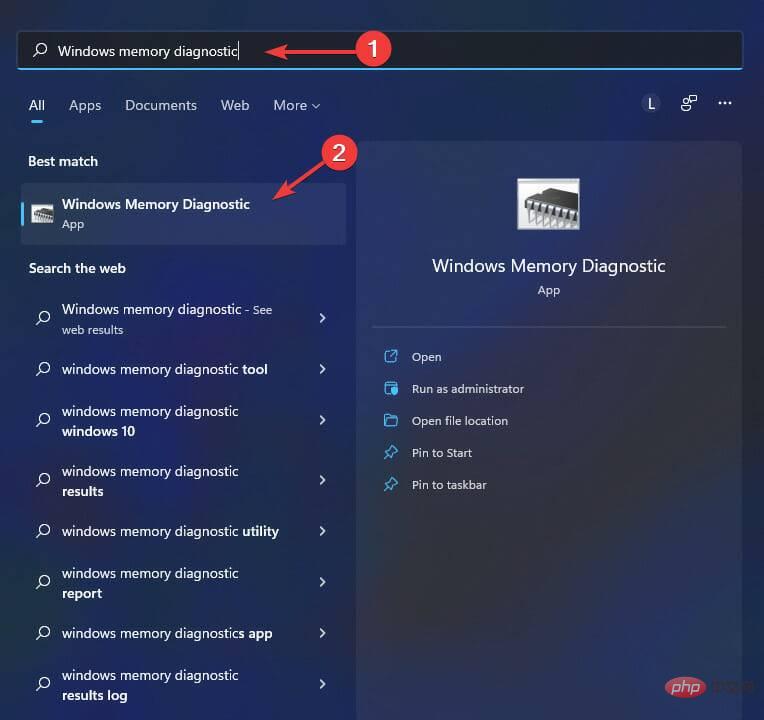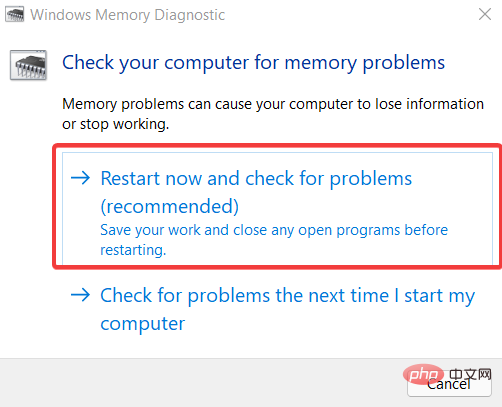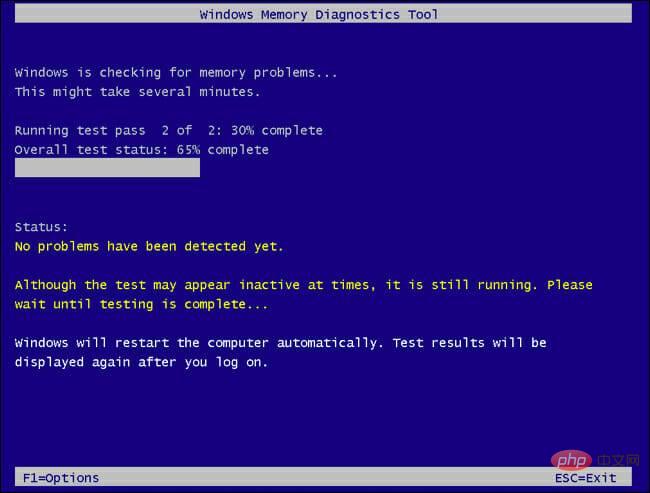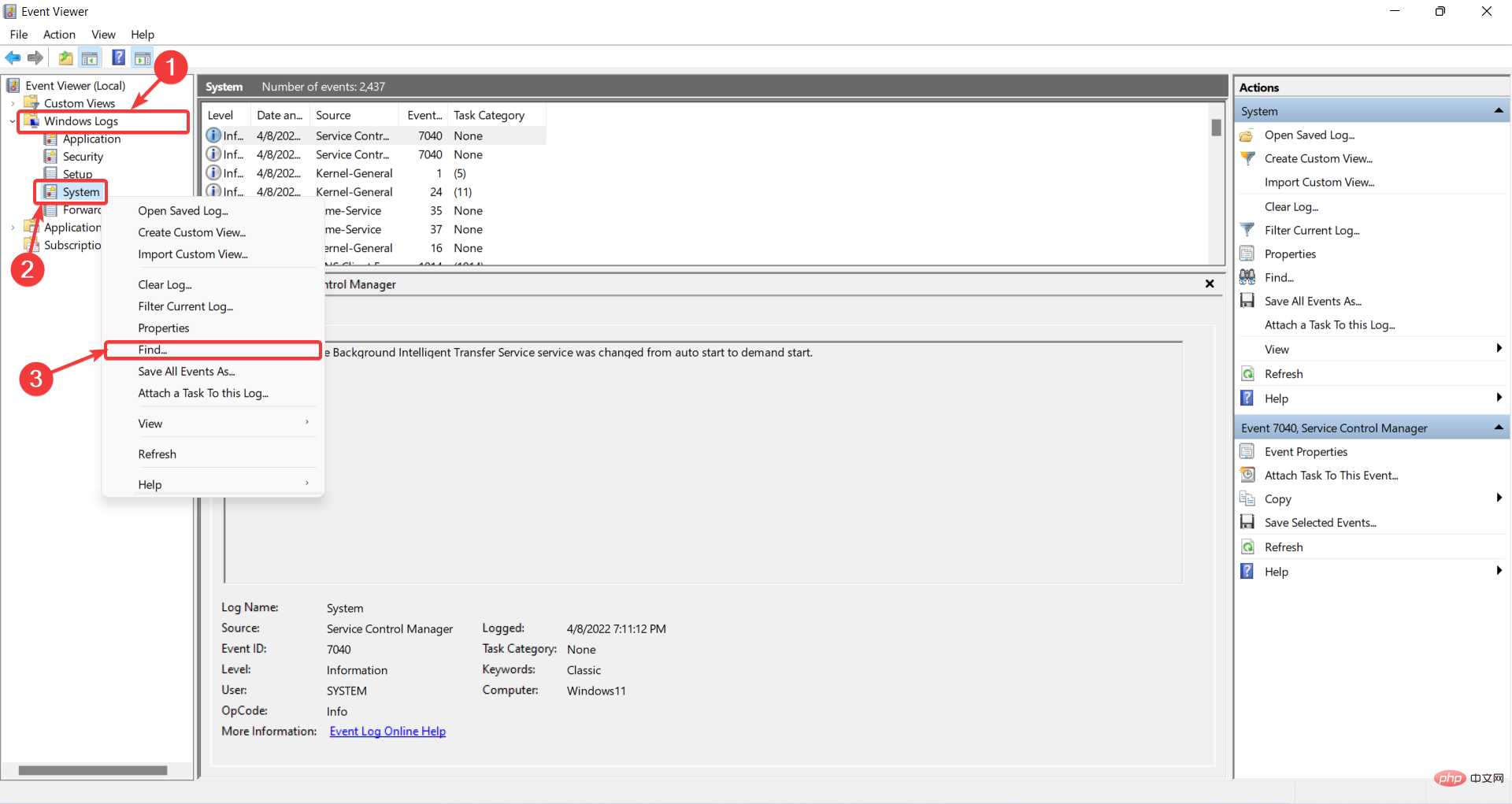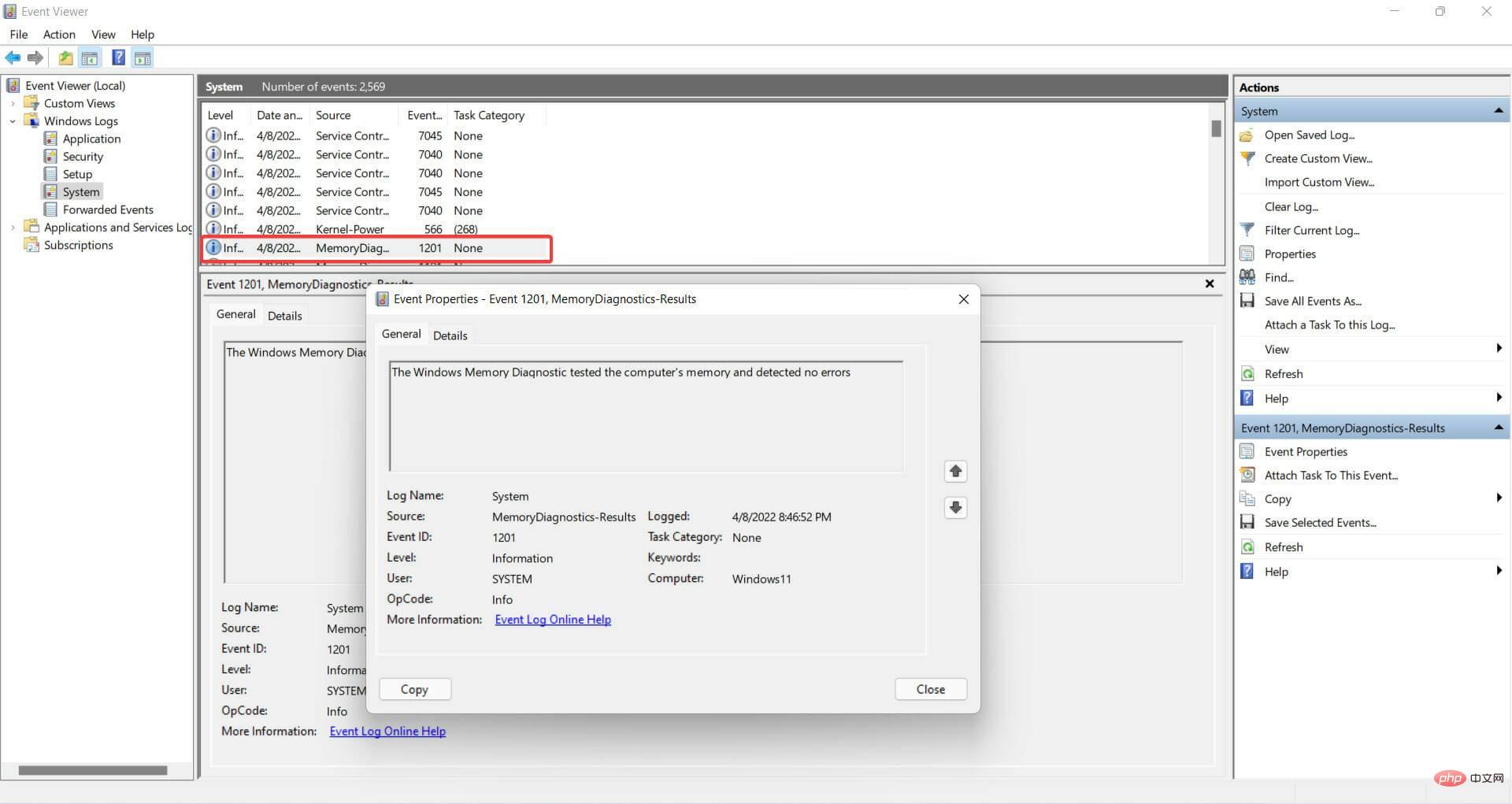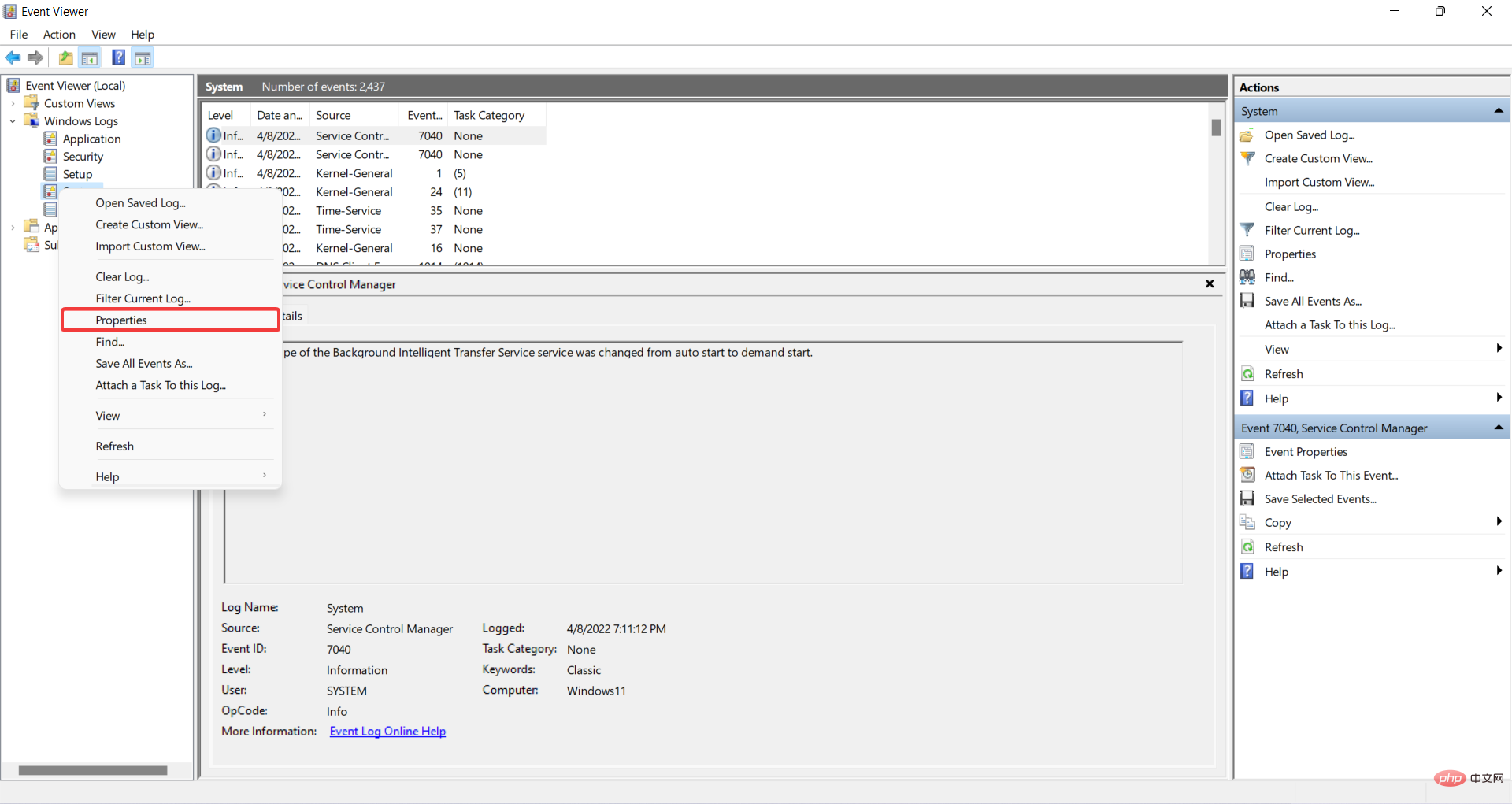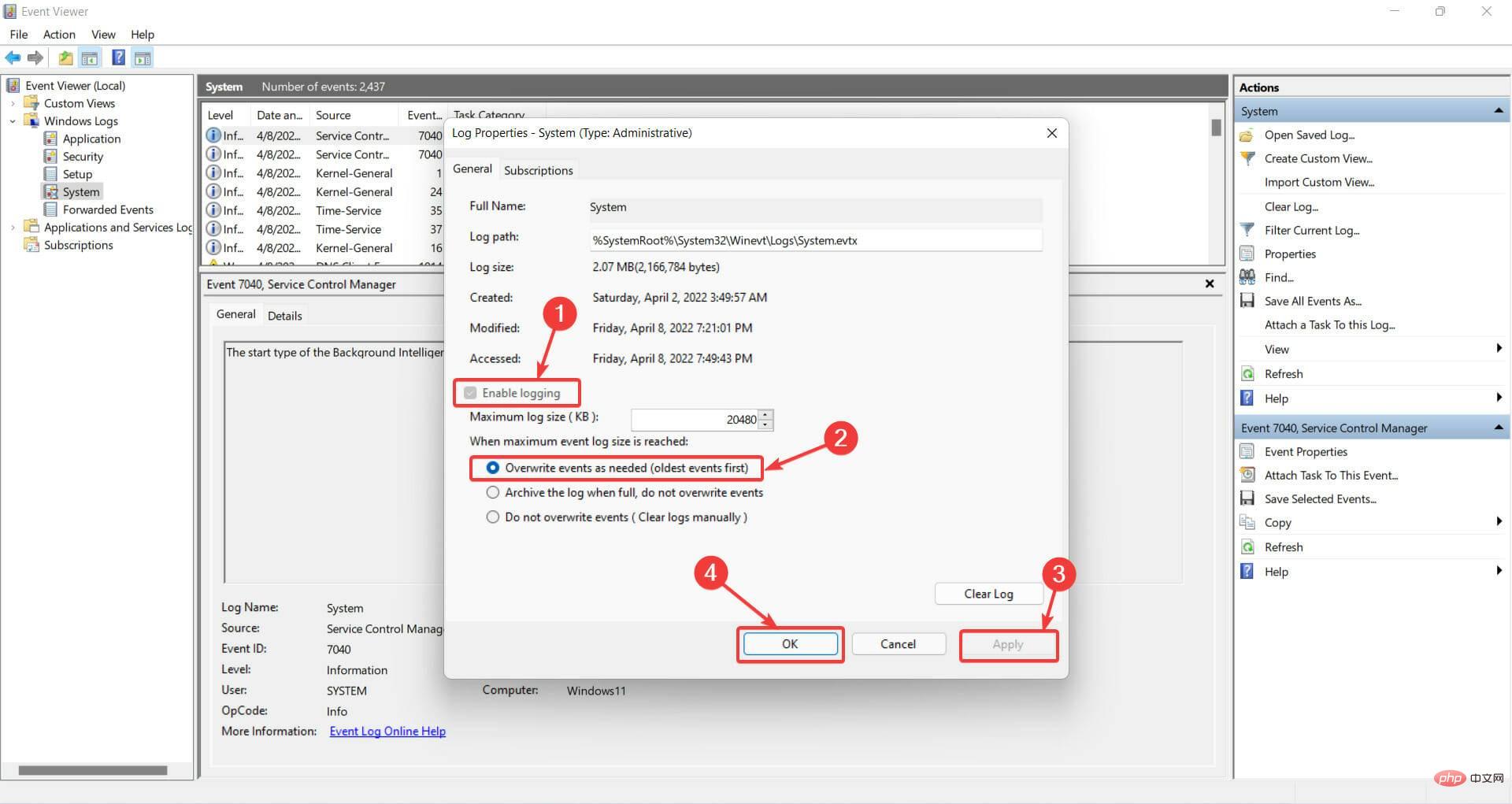How to Fix Windows Memory Diagnosis No Results
One of the most common problems when troubleshooting a Windows PC is that the Windows Memory Diagnostic returns no results.
You may experience problems if your computer's RAM is defective. As a result, application crashes, system freezes, Blue Screen of Death (BSOD), data corruption, and other issues may occur.
This is when you need to check your RAM to see if there are any issues. To do this, you can use a hidden tool in Windows called Windows Memory Diagnostic.
But, if you don’t get any results after performing the scan, here’s how to fix it.
How to fix Windows Memory Diagnostic with no results?
1. View Windows Logs
- To run the Windows Memory Diagnostic tool, press the Windows key on your keyboard and type Windows Memory Diagnostics and select it.

- Click Restart Now and Check for Issues (Recommended) to agree.

-
Windows Memory Diagnostic Tool The screen will appear after your computer restarts. Just leave it alone and let it run the tests. This may take several minutes.

- Once completed, your system will reboot and return to the Windows desktop. Test results will be displayed after logging in.
However, sometimes this does not happen and the results do not appear on the screen automatically. In this case, follow the steps below. - Right-click the Start button and click Event Viewer. Alternatively, search for Event Viewer in the search box and find it there.

- After that, navigate to Windows Logs and select System from the menu. Right-click System and select Find.

- Type MemoryDiagnostic and click Find Next.
- The double click event will display the results and more information about the RAM.

If for some reason the Windows Memory Diagnostic Tool produces no results, try the following methods.
2. Change system properties in Even Viewer
- while holding down the Windows R key. This will start Run.
- Right-click the Start menu and click Event Viewer. Alternatively, search for Event Viewer in the search box and find it there.

- Expand Windows Log.
- Right-click System and select Properties from the menu.

- Select the Enable Logging option under the General tab, and then select Overwrite events as needed (oldest events first)options. Finally, click Apply and then OK.

3. Enter the BitLocker recovery key
- Wait for the Windows Memory Diagnostic Tool to complete.
- You may see this message that says Enter the BitLocker recovery key of your drive. When you see this, enter the recovery key .
- Finally, your PC will now restart and the results can be found in the event viewer.
It's worth noting that this issue only occurs if you use PTT instead of TPM for BitLocker.
In summary, your computer problems can be solved by running the Windows Memory Diagnostic Tool.
Use this program when your computer starts to run slowly, freeze, display a blue screen, or restart on its own.
The Windows Memory Diagnostic Tool may find problems with applications installed on your computer, whether or not the problems are caused by memory errors.
Fixing issues related to Windows Memory Diagnostics with no results is very easy, you just need to change the system properties.
The above is the detailed content of How to Fix Windows Memory Diagnosis No Results. For more information, please follow other related articles on the PHP Chinese website!

Hot AI Tools

Undresser.AI Undress
AI-powered app for creating realistic nude photos

AI Clothes Remover
Online AI tool for removing clothes from photos.

Undress AI Tool
Undress images for free

Clothoff.io
AI clothes remover

Video Face Swap
Swap faces in any video effortlessly with our completely free AI face swap tool!

Hot Article

Hot Tools

Notepad++7.3.1
Easy-to-use and free code editor

SublimeText3 Chinese version
Chinese version, very easy to use

Zend Studio 13.0.1
Powerful PHP integrated development environment

Dreamweaver CS6
Visual web development tools

SublimeText3 Mac version
God-level code editing software (SublimeText3)

Hot Topics
 What is the reason why PS keeps showing loading?
Apr 06, 2025 pm 06:39 PM
What is the reason why PS keeps showing loading?
Apr 06, 2025 pm 06:39 PM
PS "Loading" problems are caused by resource access or processing problems: hard disk reading speed is slow or bad: Use CrystalDiskInfo to check the hard disk health and replace the problematic hard disk. Insufficient memory: Upgrade memory to meet PS's needs for high-resolution images and complex layer processing. Graphics card drivers are outdated or corrupted: Update the drivers to optimize communication between the PS and the graphics card. File paths are too long or file names have special characters: use short paths and avoid special characters. PS's own problem: Reinstall or repair the PS installer.
 How to solve the problem of loading when PS is always showing that it is loading?
Apr 06, 2025 pm 06:30 PM
How to solve the problem of loading when PS is always showing that it is loading?
Apr 06, 2025 pm 06:30 PM
PS card is "Loading"? Solutions include: checking the computer configuration (memory, hard disk, processor), cleaning hard disk fragmentation, updating the graphics card driver, adjusting PS settings, reinstalling PS, and developing good programming habits.
 How to speed up the loading speed of PS?
Apr 06, 2025 pm 06:27 PM
How to speed up the loading speed of PS?
Apr 06, 2025 pm 06:27 PM
Solving the problem of slow Photoshop startup requires a multi-pronged approach, including: upgrading hardware (memory, solid-state drive, CPU); uninstalling outdated or incompatible plug-ins; cleaning up system garbage and excessive background programs regularly; closing irrelevant programs with caution; avoiding opening a large number of files during startup.
 Is slow PS loading related to computer configuration?
Apr 06, 2025 pm 06:24 PM
Is slow PS loading related to computer configuration?
Apr 06, 2025 pm 06:24 PM
The reason for slow PS loading is the combined impact of hardware (CPU, memory, hard disk, graphics card) and software (system, background program). Solutions include: upgrading hardware (especially replacing solid-state drives), optimizing software (cleaning up system garbage, updating drivers, checking PS settings), and processing PS files. Regular computer maintenance can also help improve PS running speed.
 Does mysql need the internet
Apr 08, 2025 pm 02:18 PM
Does mysql need the internet
Apr 08, 2025 pm 02:18 PM
MySQL can run without network connections for basic data storage and management. However, network connection is required for interaction with other systems, remote access, or using advanced features such as replication and clustering. Additionally, security measures (such as firewalls), performance optimization (choose the right network connection), and data backup are critical to connecting to the Internet.
 Is PS slow loading related to other programs that are running?
Apr 06, 2025 pm 06:03 PM
Is PS slow loading related to other programs that are running?
Apr 06, 2025 pm 06:03 PM
The secrets to mastering Office software include: understanding different versions and platforms, correctly installing and configuring, proficient in using the software interface, in-depth understanding of feature operations, application collaboration and sharing functions, utilizing templates and styles, mastering advanced skills, and solving common problems. In addition, you need to choose a version that suits your needs, make good use of templates and styles, develop backup habits, and learn shortcut keys and advanced techniques to improve efficiency.
 How to set color mode for export PDF on PS
Apr 06, 2025 pm 05:09 PM
How to set color mode for export PDF on PS
Apr 06, 2025 pm 05:09 PM
The secret to export PDFs with accurate colors: choose color mode according to the purpose: RGB for network display, CMYK for professional printing. Check Embed Profiles when exporting to maintain color consistency. Adjust compression settings to balance image quality and file size. For PDFs for networks, use RGB mode; for PDFs for printing, use CMYK mode.
 How to solve the problem of loading when the PS opens the file?
Apr 06, 2025 pm 06:33 PM
How to solve the problem of loading when the PS opens the file?
Apr 06, 2025 pm 06:33 PM
"Loading" stuttering occurs when opening a file on PS. The reasons may include: too large or corrupted file, insufficient memory, slow hard disk speed, graphics card driver problems, PS version or plug-in conflicts. The solutions are: check file size and integrity, increase memory, upgrade hard disk, update graphics card driver, uninstall or disable suspicious plug-ins, and reinstall PS. This problem can be effectively solved by gradually checking and making good use of PS performance settings and developing good file management habits.



